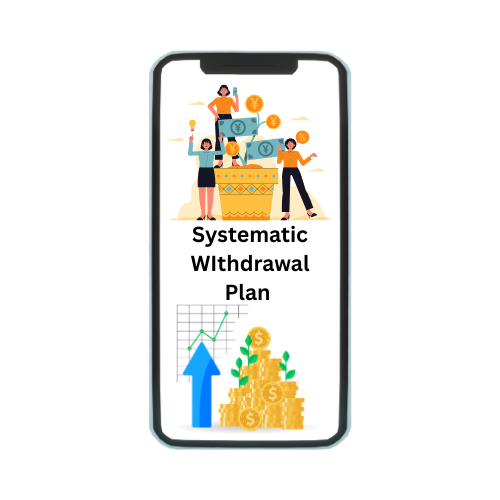Virtual banking has become increasingly popular in today’s digital age. With the convenience of online platforms, individuals and businesses can access a wide range of banking services without needing physical branches.
In this article, we will explore the concept of virtual banks, how they differ from traditional banks, the importance of virtual banking, the safety of virtual banks, and how to get started with a global virtual bank account. So, let’s dive into the world of virtual banking and discover the benefits it offers.
What is a Virtual Bank?
A virtual bank, also known as an online bank or Internet bank, is a financial institution that operates entirely online. It provides a digital platform for customers to perform banking activities such as opening accounts, making transactions, and accessing various financial products. Virtual banks eliminate the need for physical branches, allowing customers to manage their finances conveniently through websites and mobile applications.
Virtual Bank Definition: A virtual bank is an online financial institution that operates without physical branches and offers banking services through digital platforms.
How is a Virtual Bank different from a Traditional Bank?
Virtual banks have several distinctive features that set them apart from traditional banks:
- Physical Presence:Traditional banks have physical branches where customers can visit and interact with bank representatives. In contrast, virtual banks operate solely through online platforms, providing accessible banking services without the need for physical locations.
- Cost Structure:Virtual banks have lower operational costs than traditional banks. Without the expense of maintaining physical infrastructure, virtual banks can offer more competitive interest rates and lower fees for their services.
- Convenience:Virtual banks provide 24/7 access to banking services from anywhere with an Internet connection. Customers can conveniently manage their accounts, make transactions, and access financial information at their fingertips without being limited by traditional banking hours.
- Technological Integration:Virtual banks leverage cutting-edge technology to enhance user experience and streamline banking processes. They offer features such as mobile banking apps, biometric authentication, and AI-powered tools, providing a seamless and intuitive digital banking experience.
How Does a Virtual Bank Work?
Virtual bank operates by allowing customers to conduct several business activities online as a service. Their overall approach would remain tied to a physical location, like a branch office. Virtual banks operate electronically. Virtual banks operate through 3 simple ways:
- Creating an account,
- Transferring money in, and
- then transferring money out.
A virtual bank works when a customer, first of all, opens an account with the virtual bank. This means the individual would have to fill out an online application and make a deposit. The customer can submit the form online or simply print it and mail it.
- Paying Funds In :One way a virtual bank allows you to deposit money into a virtual account is by having your employer deposit your pay check directly into the account. Also, it is possible for you to transfer funds from another bank or a PayPal account into your virtual account. It also works by allowing customers to snail-mail deposits to the virtual bank.
- Paying Funds Out : Just as with a traditional bank, virtual banks also issue debit cards, and a customer is also allowed to order checks. With these provisions, you can buy products as you would normally do. Additionally, virtual banks provide the option of paying bills online.
Importance of Virtual Banking
- Guaranteed Security
- Reliability
- No Hidden Charges
- A Bank in Your Home
- Manage Your Accounts Up Close
The financial benefits of virtual banking services are manifold.
- Lower cost of handling a transaction and of operating branch network along with reduced staff costs via the virtual resource compared to the cost of handling the transaction via the branch.
- The increased speed of response to customer requirements; enhance customer satisfaction and, ceteris paribus, can lead to higher profits via handling a larger number of customer accounts.
- It also implies the possibility of access to a greater number of potential customers
- Manipulation of books by unscrupulous staff, frauds relating to local clearing operations will be prevented if computerization in banks takes place.
Forms of Virtual Banking
- ATMs
- RTGS
- Centralized fund management schemes
- The electronic clearing service scheme
- Use of magnetic ink character recognition code (MICR)
- An electronic fund transfer scheme
- Computerized settlement of clearing transactions.
Are virtual banks safe?
Safety is a top concern for individuals considering virtual banking. However, virtual banks prioritize security measures to safeguard customer data and ensure safe transactions. Here are some key aspects that contribute to the safety of virtual banks:
- Encryption:Virtual banks employ encryption technology to protect customer data during transmission. This ensures that sensitive information, such as account details and personal identification, remains secure and inaccessible to unauthorized individuals.
- Authentication:Virtual banks implement various authentication methods to verify the identity of customers. These may include passwords, biometric data (fingerprint or facial recognition), and two-factor authentication, providing an extra layer of security.
- Regulatory Compliance:Virtual banks are subject to regulatory requirements and oversight like traditional banks. They must comply with stringent standards to prevent fraud, money laundering, and other financial crimes.
- Customer Support:Virtual banks offer dedicated customer support to address customer concerns or issues. Prompt assistance and effective resolution of problems contribute to a safe and reliable banking experience.
While virtual banks prioritize security, customers need to take precautions as well. Using strong passwords, regularly updating software and applications, and being vigilant about phishing attempts are best practices for maintaining online security.
How to get started with a global virtual bank account.
If you’re interested in opening an international virtual bank account, follow these steps:
- Research:Conduct a thorough investigation to identify reputable virtual banks that offer global banking services. Look for banks with positive customer reviews, robust security measures, and a strong track record.
- Eligibility Check:Review the requirements for opening a global virtual bank account. These may include age restrictions, residency or citizenship requirements, and minimum deposit amounts.
- Application Process:Visit the virtual bank’s website or download their mobile app to initiate the account opening process. Fill out the required application forms, provide necessary identification documents, and complete any additional verification steps.
- Funding Your Account:Once approved, support it by transferring money from an existing bank account or through other accepted methods. Follow the instructions provided by the virtual bank to ensure a smooth and secure transfer.
- Account Management:After successfully opening a global virtual bank account, you can start managing your finances online. Explore the various features and services offered by the virtual bank, such as money transfers, bill payments, and investment options.
By choosing a reliable virtual bank, you can enjoy the benefits of borderless banking and seamless international transactions.







